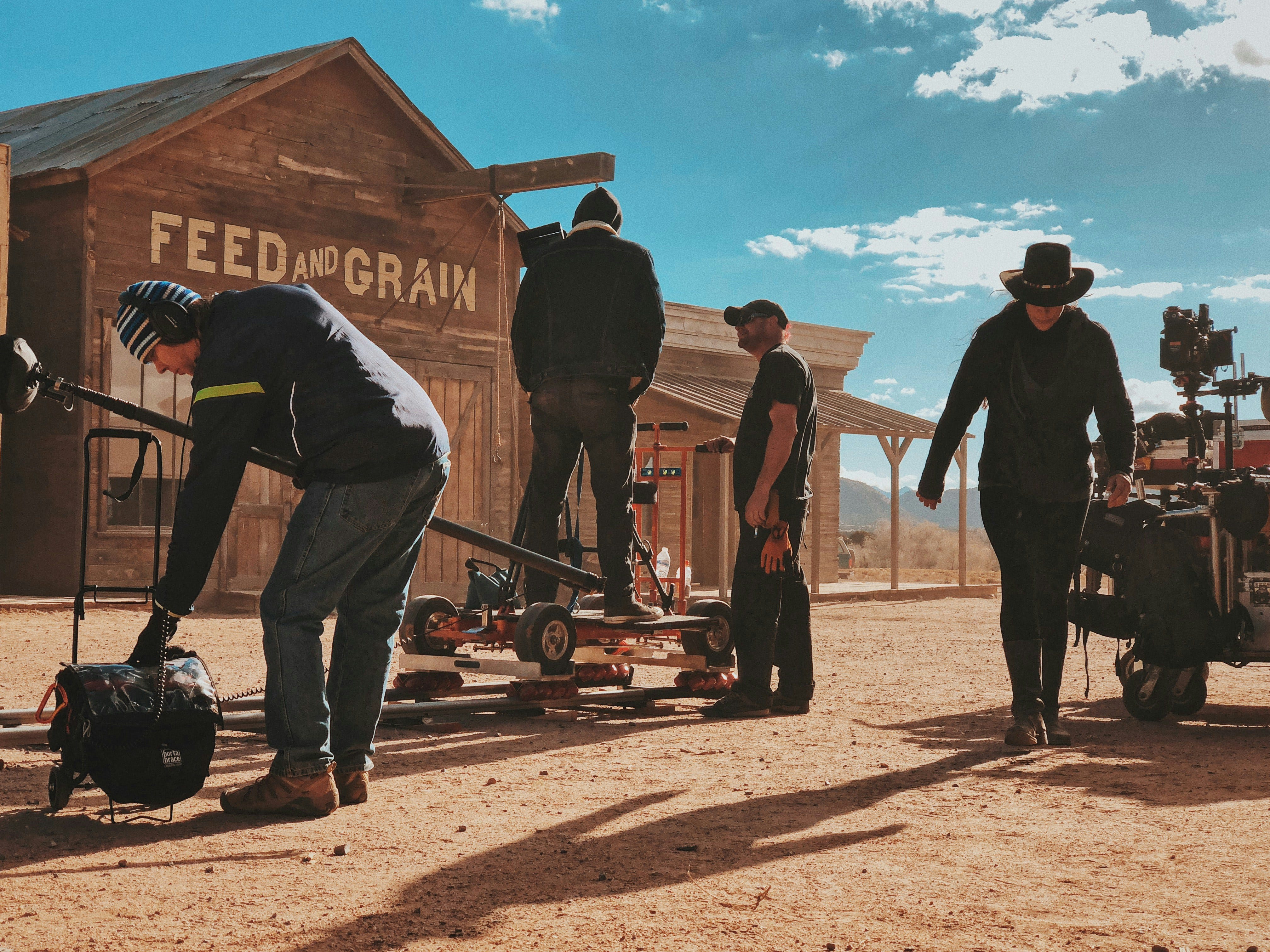The way we make and watch movies is evolving fast. Traditional filmmaking relies on high-end cameras, big crews and even bigger budgets. But what if the future of cinema was sitting right in your pocket?
With the release of 28 Years Later in June 2025, we could be witnessing a game changer in the film industry. The highly anticipated sequel to 28 Days Later has largely been shot on an iPhone 15 Pro Max, proving that smartphones are no longer just for social media clips and short films.
Of course, 28 Years Later isn’t the first film to push the boundaries of iPhone filmmaking. Visionary directors like Steven Soderbergh and Sean Baker have already used mobile devices for professional film production. And with apps like Filmic Pro helping to fine-tune everything from exposure to depth of field, the idea of making a blockbuster without a Hollywood budget is becoming more realistic.
So, is this the future of filmmaking? Can an iPhone replace traditional cameras in the world of feature films? And what does this mean for aspiring directors looking to break into the industry?
The Evolution of iPhone Filmmaking
Not long ago, the idea of shooting a feature film on a smartphone would have been laughed off as a gimmick. Serious filmmakers relied on traditional cameras – and for good reason. Big-budget productions demanded high-resolution footage, precise depth of field and professional-grade equipment. But as smartphone technology has advanced, so has its role in film production.
It all started with indie filmmakers looking for ways to tell their stories on a budget.
One of the first notable examples came in 2012 with Searching for Sugar Man, a documentary about two fans' quest to find folk musician, Sixto Rodriguez. It had some footage shot on an iPhone 5s. When the filmmakers ran out of money for traditional Super 8 film, they turned to the 8mm Vintage Camera app to replicate its grainy texture and soft colour palette. It proved mobile technology could stand up to the big screen.
Then came Sean Baker’s Tangerine (2015), a film that was shot entirely on an iPhone 5s and premiered at the Sundance Film Festival. The film’s success wasn’t just about novelty – it looked and felt like a professional production, thanks to creative camera work, skilled editing and the use of Filmic Pro.
Soon after, Hollywood directors started taking notice. Steven Soderbergh, known for pushing the boundaries of filmmaking, went all-in on iPhone filmmaking with Unsane (2018) and the Netflix-backed production High Flying Bird (2019). Soderbergh called shooting on an iPhone ‘liberating,’ praising their portability, flexibility and ability to capture natural performances.
Fast forward to today, and we have 28 Years Later, a feature film that brings iPhone filmmaking into the mainstream like never before. With a major franchise backing this approach, the industry faces an undeniable shift.
How Smartphones are Changing Film Production
Making a feature film meant securing a huge budget, renting professional cameras and assembling a crew of specialists to handle every aspect of film production. But that’s all changing thanks to cutting-edge mobile devices.
Smartphones, especially iPhones, are breaking down barriers in the industry, making filmmaking more accessible, affordable and creative. Here’s how:
1. Filmmaking for everyone
One of the biggest shifts in the industry is that anyone with a smartphone can become a filmmaker. Whether it’s a short film shot for fun or a project that lands at a film festival, the tools are right in your pocket. In the past, a filmmaker needed expensive gear just to get started. Now, you just need a phone, a story and a little creativity.
2. Budget-friendly filmmaking
Shooting a film with traditional cameras and high-end equipment comes at a cost. But by using iPhones to shoot instead, filmmakers can drastically cut expenses. This is particularly relevant at a time when streaming services have changed the way movies are funded and released. With cinema ticket sales under pressure, lower-cost productions could be the industry’s future.
3. Pro-level features in your pocket
Smartphones are not only convenient but powerful. For example, the iPhone 15 Pro has advanced capabilities like adjustable depth of field, ProRes recording and enhanced low-light performance. Combine that with apps like Filmic Pro, which gives filmmakers full control over shutter speed, focus and exposure, and you’ve got a device that rivals professional-grade cameras.
4. Social media is changing the game
Smartphones also make it easier to share content instantly. A film that might have taken years to get noticed can now go viral overnight. Platforms like YouTube, Instagram and TikTok have helped launch filmmakers’ careers, making social media a key part of modern film production. David F. Sandberg is one such example, gaining attention for his short film Lights Out before going on to direct major films like Annabelle: Creation and Shazam!.
The Future of iPhone Filmmaking
As technology improves and more high-profile directors embrace smartphone filmmaking, we’ll likely see even more feature films using iPhones to shoot.
With each new iPhone release, Apple pushes mobile camera technology further. Future models will likely enhance:
· Depth of field capabilities for more cinematic shots
· Pro-grade optical zoom to compete with traditional cameras
· AI-powered video stabilisation for smoother action sequences
· Better low-light performance for night scenes
These advancements could make iPhone filmmaking even more competitive, allowing filmmakers to push the boundaries of what’s possible with mobile devices.
As streaming services continue to dominate the entertainment industry, they could play an important role in legitimising movies shot on iPhones. Platforms like Netflix and Apple TV+ and major film festivals (like Sundance Film Festival, the Toronto International Film Festival and even Cannes) are increasingly open to smartphone-made submissions.
While using iPhones to shoot entire films is impressive, the future may lie in hybrid filmmaking – where a smartphone is seamlessly integrated with traditional filmmaking. More productions may start blending high-end cameras with iPhone filmmaking, using smartphones for dynamic shots, intimate close-ups and guerrilla-style scenes that would be difficult to capture with bulky equipment.
Conclusion
28 Years Later might not mark the end of traditional filmmaking, but it does prove that smartphones can handle high-level feature film production. Whether it’s indie creators breaking into the industry or major directors experimenting with new techniques, iPhone filmmaking is no longer just a trend.
If 28 Years Later performs well, we could see even more critically acclaimed films shot on smartphones. This means more freedom, more accessibility and more opportunities for filmmakers to tell their stories.


